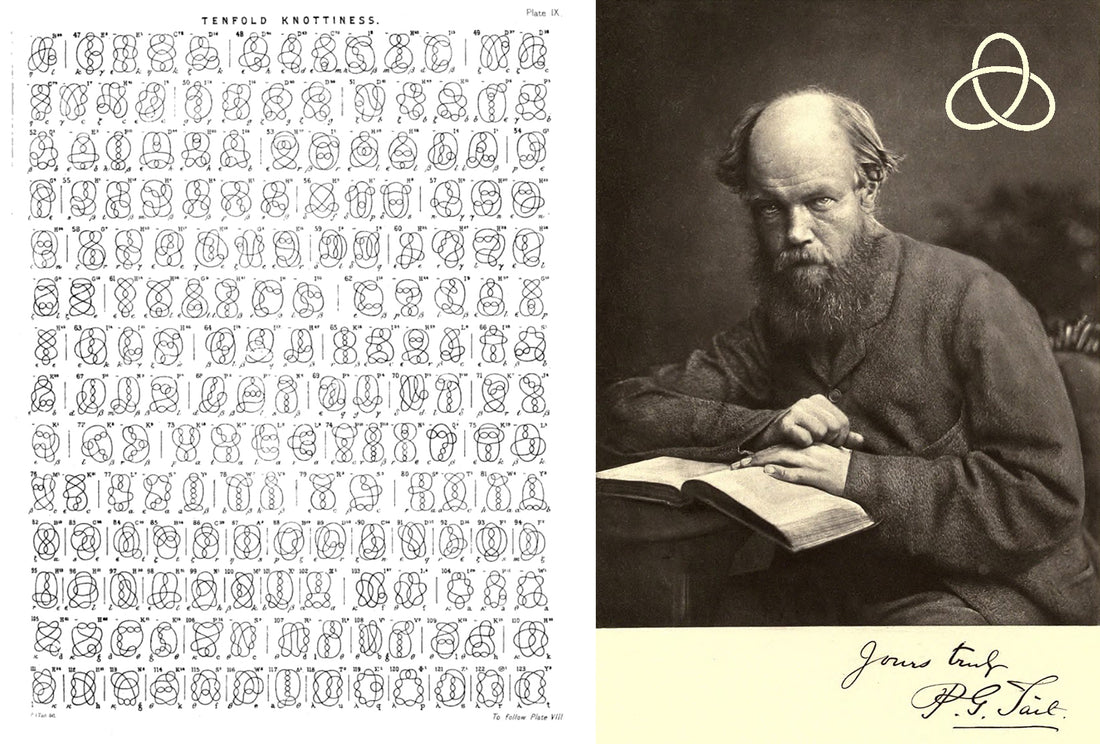Knot theory knots have nothing to do with shoelaces. Knot theory knots are all closed loops, and to confuse you even further, the simplest knot is not really a knot at all. It’s a simple circle and it’s called an "unknot".
Knots have interested humans for their aesthetics and spiritual symbolism for a long time. Knots appear in various forms of Chinese artwork dating from several centuries BCE. The endless knot appears in Tibetan Buddhism, while the Borromean rings (named after a 1300s Italian noble family that included the "link" on their coat of arms) have made repeated appearances in different cultures. Also, the Celtic monks who created the Book of Kells filled entire pages with intricate Celtic knotwork. They really, really liked knots.
Knot theory is a branch of topology, a field in mathematics that studies the properties of space that are preserved under continuous transformations, e.g. Möbius Strip or Klein Bottle. In knot theory, a “knot” is a closed loop in 3-dimensional space, much like a piece of rope whose ends are fused together. The main goal of knot theory is to determine whether two knots are equivalent, meaning one can be transformed into the other by bending, stretching, or twisting the rope without cutting or passing it through itself. This type of transformation is called an “ambient isotopy”.
An “invariant” is a property of a knot that remains the same regardless of the knot's deformation. This can be expressed mathematically with a polynomial, as explained in this short video by mathematics professor Aaron Lauda of the USC Dornsife College of Letters, Arts and Science. Knot invariants help distinguish between different knots.
The original motivation for the founders of knot theory was to create a table of knots and links, which are knots of several components entangled with each other. The first knot tabulator was Scottish mathematical physicist Peter Guthrie Tait. In 1885 he published a table of knots with up to ten crossings, and what came to be known as the Tait conjectures. This record motivated the early knot theorists. Since then, more than six billion knots and links have been tabulated.
So, other than to satisfy mathematical curiosity, what is knot theory used for?
Knot theory has applications beyond pure mathematics, including in fields such as biology (DNA knotting and untying), chemistry (studying molecular structures) and physics (topological phases of matter and string theory).
By way of a concrete example: during DNA replication, transcription and cell division, the DNA molecule experiences a variety of topological issues, such as supercoiling, knotting and tangling. These knots and tangles can prevent proper cellular function. One of the key biological processes where knot theory is applied is in the function of “topoisomerase enzymes”, which play a crucial role in solving these problems. Topoisomerases enzymes help resolve the topological stress on DNA by cutting, passing strands through one another, and then re-ligating the strands to remove supercoils, knots and tangles in DNA. These enzymes operate similarly to a knot-untangling algorithm, manipulating the DNA in a way that untangles it without breaking the genetic code. Knot theory provides the mathematical tools to model and understand the various forms of DNA entanglements. It helps in understanding the minimal number of steps required to resolve these knots. By applying knot invariants, scientists can differentiate between different topological states of DNA and predict how enzymes like topoisomerases will act on the DNA structure.
Eeek, probably too much detail … but you get the idea. If you're up for a deep dive, watch a video on "The Insane Math of Knot Theory" by science educator Derek Muller aka "Veritasium" HERE.
Story Idea: Peter Davis
____________________________
References
wikipedia.org/wiki/Knot_theory
wikipedia.org/wiki/Celtic_knot
Images
1. Tenfold Knottiness, plate IX, from Peter Guthrie Tait's article "On Knots", 1884
2. A Chinese knot. Credit: Webridge
3. Celtic cross on a grave in Brompton Cemetery, London
4. Agemaki knot on Momoyama period Japanese Armour
5. Tibetan endless knot
6. Knot diagram of the trefoil knot, the simplest non-trivial knot
7. The Borromean rings: no two circles are directly linked, but the three are collectively interlinked. Cutting one ring frees the other two.
8. Increasingly complex knots
9. Links v. Knots
10. Video: What's Knot Theory? USC Dornsife College of Letters, Arts and Sciences, 2014
11. Video: The Insane Math Of Knot Theory, Veritasium, 2023







































































































